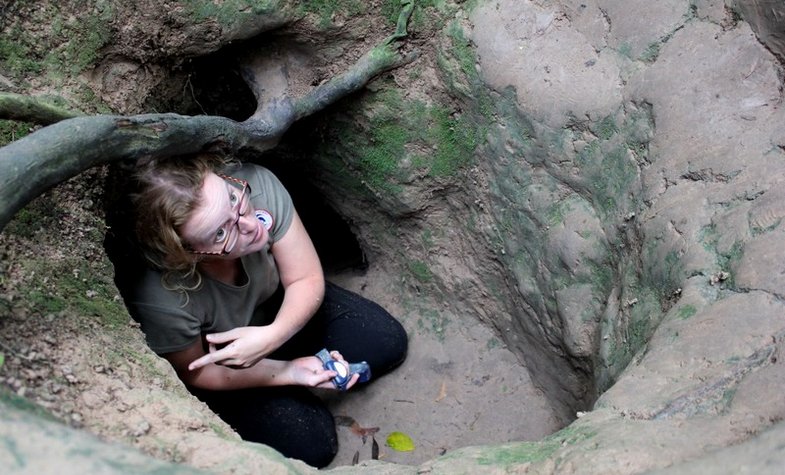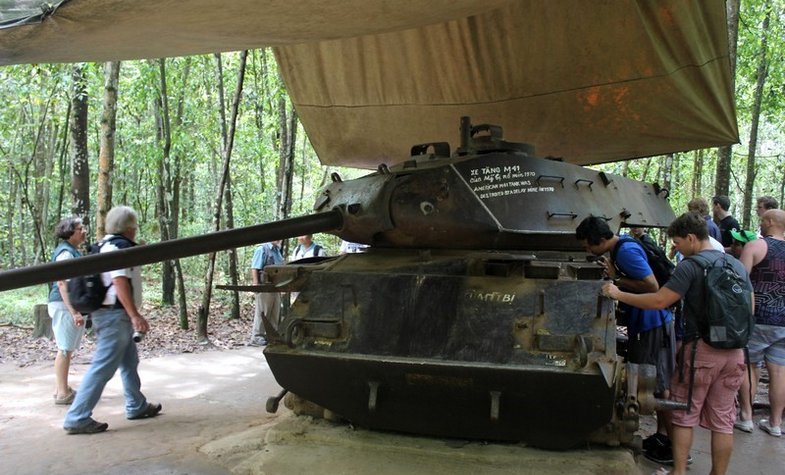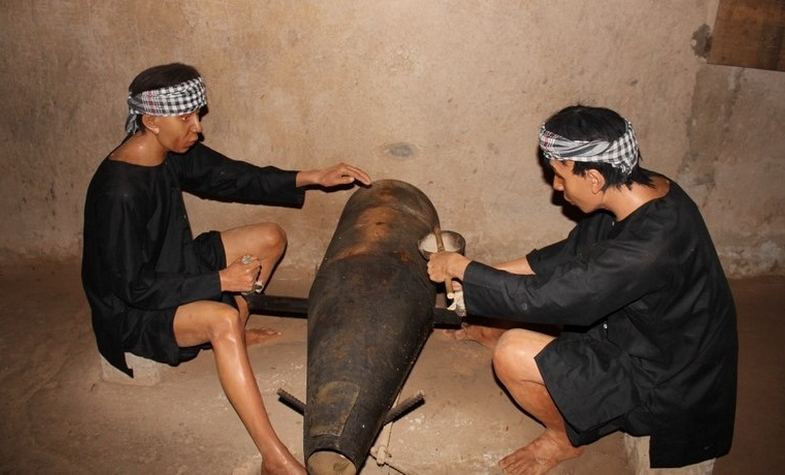

The Cu Chi Tunnels in Vietnam are a remarkable testament to the resourcefulness and resilience of the Vietnamese people during the Vietnam War. These intricate underground tunnels served as a hidden network for the Viet Cong, complete with living quarters, kitchens, and hospitals. Visiting the Cu Chi Tunnels provides a fascinating insight into the history and ingenuity of those who used them.
The Cu Chi Tunnels are located in the Cu Chi District of Ho Chi Minh City, Vietnam, approximately 40 kilometers (25 miles) northwest of the city center. Cu Chi is not far away from Sai Gon center then you can travel by private van or motorbike there to spend time within a private half-day or full-day tour. Otherwise, combine a city tour with the Cu Chi tunnels visit tour during a day will save your time if you don’t have much time during your trip. In case you like to discover the unique religion of the locals, let’s visit the Cao Dai temple (Tay Ninh) which is not far from Cu Chi. If you travel with your kids, the Cu Chi Wildlife Rescue station may interest them on the way leading to Cu Chi Tunnels.
Video about Cu Chi tunnels:
Cu Chi tunnels’ history
The Cu Chi Tunnels (Ben Dinh and Ben Duoc tunnel complexes) are chiefly known for their role in supporting large numbers of Viet Cong fighters during the American-Vietnamese War from 1965 to 1975. However, the construction of the tunnels actually commenced in 1948 when the Viet Minh (the French name for the Vietnamese Communists) began their liberation campaign against the Colonial French.

The original purpose of the construction is to provide the peasant army a base for communicating among villages while being protected. They soon took on the role of delivering soldiers directly to and from the battlefield, through 250kms of tunnels in the Cu Chi district, which stretched from the Cambodian border to Saigon. In the years of 1960s, the tunnels have been fixed and added to serve the war with America. The Iron Triangle (guerrilla power base) located right across the great Saigon River from Cu Chi enabled the VC fighters to connect and invade Saigon at will, even digging deeper into the nearby American Cu Chi Army Base. However, most operations in the Army Base were for intelligence and not so much to attack the enemy. There were 200 American and South Vietnamese bases with over 50 000 soldiers, so information on the enemy was vital.

Operating within the tunnels was extremely dangerous, as the fighters not only had to avoid the enemy army above ground, they also encountered scorpions and snakes underground. There was also the problem of disposing of the soil in secret, without leaving tell-tale signs for ground troops or air reconnaissance planes. The guerrillas cleverly spread the excavated soil into bomb craters or scattered it into the river under the cover of darkness. The entire Cu Chi Tunnels has a length of up to 250 km, including many different areas such as infirmary, accommodation, kitchen, storage, office... Working in the tunnels was a constant battle of the mind as it was sometimes necessary to stay underground for weeks on end, living in cramped conditions, and having to share the tunnels with a multitude of dangerous creatures. These snakes, scorpions, fire ants, rats, centipedes, and other critters were sometimes used as deterrents for the enemy.
Related article: Is Cu Chi Tunnels worthwhile to visit?

The American army used many different technics to locate the Cu Chitunnels; one included the use of German Sheperd sniffer dogs. To throw the American sniffer dogs off the scent, the VC often sprinkled pepper around vents or they would sometimes use stolen soap or clothing from the US forces, which tricked the dogs. After a time, the dog handlers refused to send any more of their dogs into the tunnels as too many were being maimed or killed. Instead, they used more and more humans, these extremely brave soldiers were known as “Tunnels Rats.”
As the US military attempts to flush out the tunnels proved fruitless, they adopted a “Scorched Earth” strategy, using bulldozers, poisonous gas, and defoliants. These also proved to be ineffective, as the VC were still able to operate from the tunnels and it was here that they masterminded the 1968 Tet Offensive. In the end, the US military resorted to carpet bombing by B52s and leveled the district. At least 12 000 Vietnamese fighters and sympathizers died in this area during the War.
Maybe you like our tours including exploring Cu Chi Tunnels: